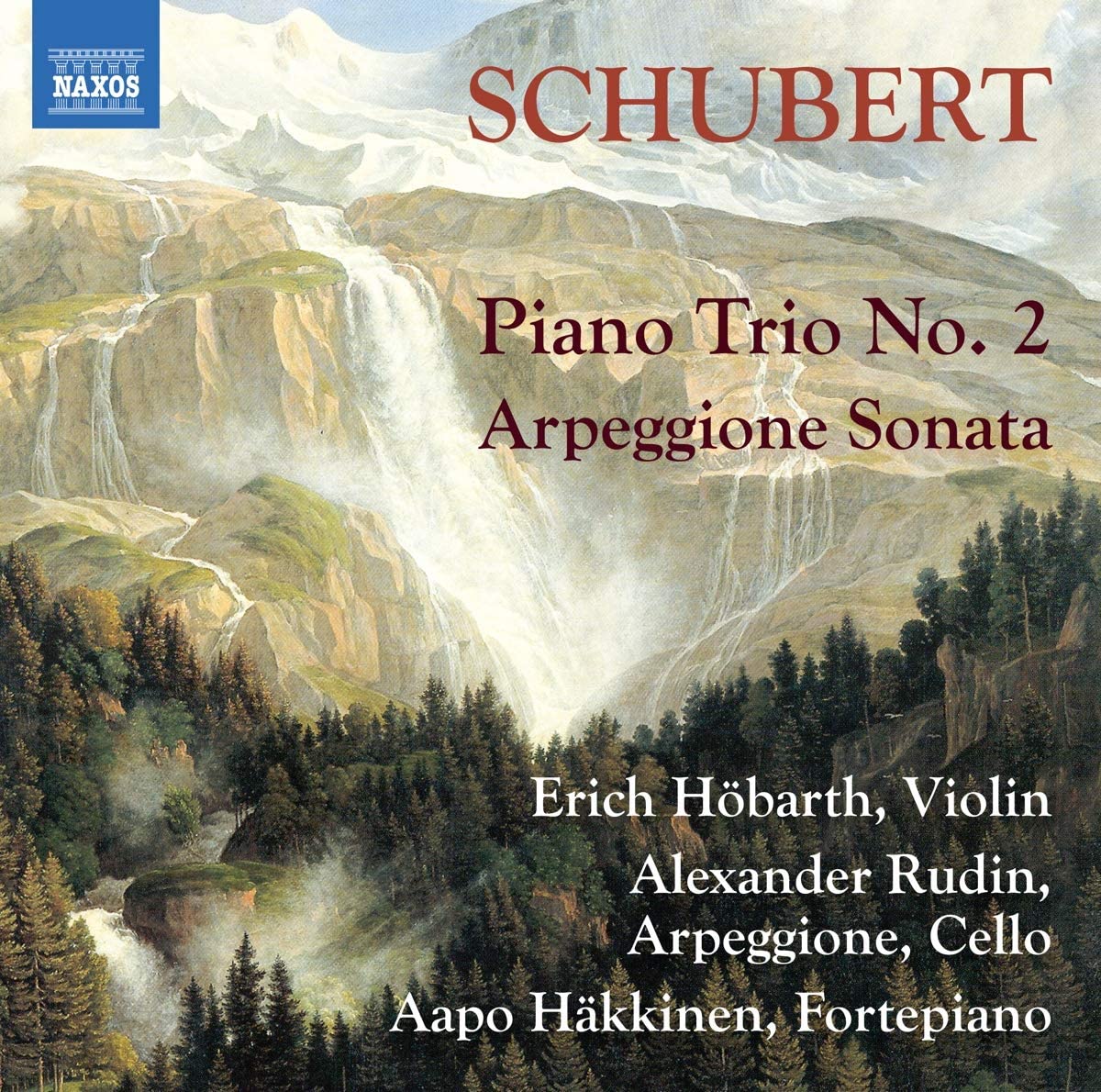Erich Höbarth violin, Alexander Rudin arpeggione/cello and Aapo Häkkinen Graf fortepiano
79:55
Naxos 8.573884
Click HERE to buy this on amazon.co.uk
[These sponsored links help the site remain alive and FREE!]
Arguably the main talking point here is Schubert’s Arpeggione Sonata in A minor, D 821 played on the instrument for which it was written in 1824. The arpeggione, a kind of bowed guitar with frets and six strings, had been invented only around a year earlier by one of the principal Viennese luthiers, Johann Georg Stauffer. It would enjoy a brief existence, its only noted performer being Vincenz Schuster, a guitarist who was a regular performer at the domestic concerts given by Schubert and his friends. Today the work is usually played on the cello, or, less frequently the viola, but given the greater compass of the arpeggione, it requires transposition and has been adapted for all manner of instruments, not to mention turned into a concerto. Schubert scholars tend to be rather snooty about it, but it is an affable, engaging and substantial piece in three movements, a playful Allegro moderato with a development section that builds a fair degree of tension, a song-like Adagio with some typically felicitous modulations and a good-humoured final Allegretto that sets out as an animated dialogue between the two instruments.
The performance is excellent. The arpeggione sounds (at least here) a little like a cross between a cello and a viol, but the upper register has a distinctive wiry sonority. It blends well with the fortepiano, a Viennese instrument built by Conrad Graf in 1827, the year of the E flat Piano Trio, and just a year before Schubert’s death. It would have been good to have been given more detail on it, for it is an instrument of exceptional tonal beauty, with a silvery top register capable of the most delicate scalic passagework and arpeggiations, but also a strong, firmly rounded bass, as the Finnish harpsichordist and fortepianist Aapo Häkkinen demonstrates throughout both works.
The Piano Trio No 2 in E flat, D 929, is of course one of the great products of Schubert’s last year, a massive four-movement work rich in all that is valued in the composer. The strong opening announcement of the Allegro sets out the stall with striking effect. This, Schubert seems to be saying, is going to be something impressive and of expansive breadth. Yet he is quickly into more lyrical territory with the cello’s statement and the movement will ebb and flow between moments of dramatic tension and flowing lyricism, all splendidly captured here by Erich Höbarth, Alexander Rudin and Häkkinen. Listen, for example, to the beguiling lyrical warmth of the secondary idea. A similarly treasurable moment comes at the same point in the succeeding Andante con moto, and again shortly afterwards with the keyboard’s arpeggiations, a passage marked con Pedale, appassionato, where Häkkinen conjures pure magic from the Graf. But throughout these are performances of the highest calibre, performances that given the bargain Naxos price tag should be snapped up without delay.
Brian Robins
